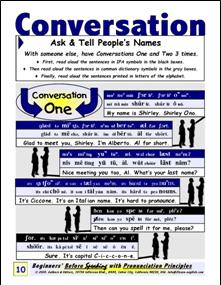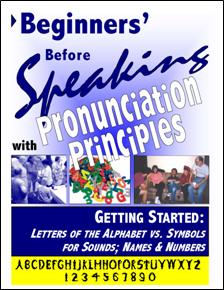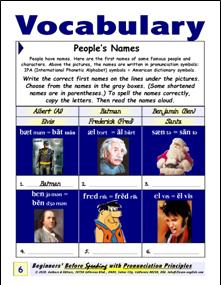1
/
of
6
Work/Life English
E-00.02 Listen & Speak: Pronunciation Principles for Alphabet Letters, Sound-Symbols, Names, & Numbers
E-00.02 Listen & Speak: Pronunciation Principles for Alphabet Letters, Sound-Symbols, Names, & Numbers
Regular price
$5.00 USD
Regular price
Sale price
$5.00 USD
Unit price
/
per
Beginners’ Before Speaking with Pronunciation Principles. Getting Started: Letters of the Alphabet vs. Symbols for Sounds; Names; Numbers, pages 1-18 + Answer Key pages 6-9
18 (+ 2) pages = 20 pp
Who It’s For: Novice Language Learners & Helpers Who Want to Start with the Smallest Units of Language (Sounds) & Build to Connected Words in Speech & Conversation
Why It’s Useful: At the onset of their attention to Oral Language Skills (Listening & Speaking), teachers / learners may want to start out as “small” as possible. So it makes sense to launch instruction with the names of the 26 letters of the English alphabet, which contain most of the 40 or more phonemes (distinctly meaningful vowel & consonant sounds) of the language. These can be associated with IPA (International Phonetic Alphabet) and American-dictionary Symbols for Sounds ( + the letters that produce them). Beginners and progressing students alike will enjoy putting these together in the Names of Famous People and in Meeting-People Conversation.
What You’ll Do:
[1] After comment on the contents of the page 1 Chapter Opener, pay particular attention to the (American-English) sounds in the articulation of the 26 Names of Alphabet Letters. On pages 2-5, (re-)teach / (re-)learn the letter names at appropriate levels of speech clarity. (Re)View their correlation to (Symbols for) 40 Sounds and Word Examples. If appropriate, include practice in use of one or more dictionary or online Pronunciation Keys.
[2] In the Vocabulary Game on pages 6-9, enjoy (the challenge of) reading Sound-Symbols in Context aloud, matching the first names of 39 famous people / characters with their spellings, and even inserting their last names + info about them if feasible. The Intro to and relevant section of the BegBesp w/PrPr Answer Key is attached to the E-00.02 Download.
[3] In the rest of the Download, try out new techniques for speaking practice: In pairs or groups, “read aloud” Conversations about Names—and later, Contact Data —in three ways: from IPA & Dictionary Sound-Symbols and from connected text. Get or remember the basics of Syllables & Syllable Stress. Use the clear articulation skills you and others are developing in (real) getting-acquainted activities—Name, Personal Info, & Numbers Chains; Bingo Games, and authentic oral exchanges
Couldn't load pickup availability












